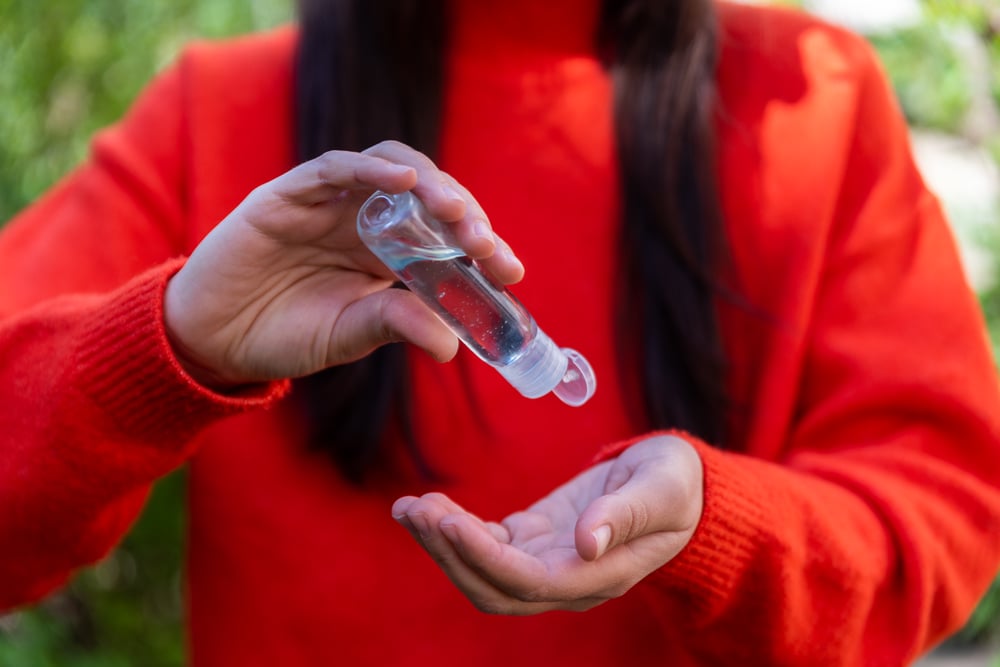
Editor's Note: This post was originally published on July 15, 2020 but has since been updated with information from a new alert from the FDA about sanitizers that include isopropyl alcohol as an ingredient.
Child care providers implement hand hygiene procedures to keep children in care, their families and themselves healthy and well. The COVID-19 pandemic has resulted in increased hand hygiene vigilance in child care programs to protect against viral spread. Health experts recommend using hand sanitizer that contains at least 60% alcohol when hand washing with soap is not feasible. Hand sanitizer that once was extremely difficult to access early on in the coronavirus crisis, now is increasingly becoming more available. As a result of the pandemic, new hand sanitizer brands and products are being introduced into the consumer market. Unfortunately, some of the emerging hand sanitizer products are not safe to use, prompting alerts by the Food and Drug Administration (FDA) and the Centers for Disease Control (CDC).
Problem:
An early July 2020 health advisory released by the CDC states that, “Most commercially available alcohol-based hand sanitizers or rubs (ABHSR) contain either ethanol or isopropanol as active ingredients.” However, the FDA is investigating hand sanitizer products in the U.S. market to determine if they are contaminated with methanol. Early investigative results indicate that some hand sanitizer products labelled as containing ethanol have tested positive for ‘methanol’ contamination. Methanol, or wood alcohol, is a substance that can be toxic when absorbed through the skin or when ingested and can be life-threatening when ingested. Methanol is not an acceptable active ingredient in hand sanitizer products.
The FDA continues to investigate hand sanitizer products, and subsequently discovered a new toxic ingredient in some products marketed in the U.S. In August 2020, the FDA expanded their do-not-use list of hand sanitizers to include products with 1-propanol in their ingredients. Hand sanitizers that have tested positive for 1-propanol may be labeled as containing isopropyl alcohol.
What to Look For:
Check the label of each brand of hand sanitizer you have to see if it contains ethanol (also known as ethyl alcohol) or isopropyl alcohol. If hand sanitizer in your possession is labeled as containing ethanol or isopropyl alcohol, access the FDA hand sanitizer products list to see if the hand sanitizer in question is on the list. The FDA continues to investigate hand sanitizer products in the market and update their contaminated hand sanitizer products list. If an ethanol-based hand sanitizer that you have on hand is not on the FDA list presently, as testing continues, consider rechecking the list periodically to ensure that hand sanitizer products that you have are not added to the list of contaminated products.
Exposure Symptoms:
Methanol exposure through skin absorption or ingestion both can be toxic. Serious toxicity is more commonly experienced when methanol is ingested. According to the National Institute for Occupational Safety and Health, “methanol poisoning may not become apparent until after an asymptomatic period of 1 to 72 hours.” When ingested, 1-propanol exposure also can be toxic. Ingestion can occur accidentally (young children) or when substances are used as an ingestible alcohol substitute. Methanol or 1-propanol exposure symptoms are similar and can include:
- Drowsiness
- Decreased alertness
- Dizziness
- Nausea
- Vomiting
- Abdominal pain
- Headache
- Blurred vision
- Blindness
What you can do:
- Scan your hand sanitizer product supply to see if brands you have on hand are included in the FDA testing and manufacturer’s recalls list. (English Version / Spanish Version)
- Stop using and dispose of products included in the FDA hand sanitizer recall list.
- Seek medical treatment if you find that you, a family member or other child in your care have been exposed to a hand sanitizer on the FDA do-not-use list and are experiencing symptoms of poisoning.
- If you provide child care and find that you have used a hand sanitizer product that is included in the FDA recall list, notify families immediately, alert them to monitor their children for poisoning symptoms and to seek medical care if symptoms arise.
![ECCTAC-Logo[1]-1](https://info.childcareaware.org/hs-fs/hubfs/Rich%20Text%20Pasting/unknown-1594845155324.png?width=299&name=unknown-1594845155324.png)
This post brought to you by CCAoA's Emergency Child Care & Technical Assistance Center.
Learn more and request technical assistance.





